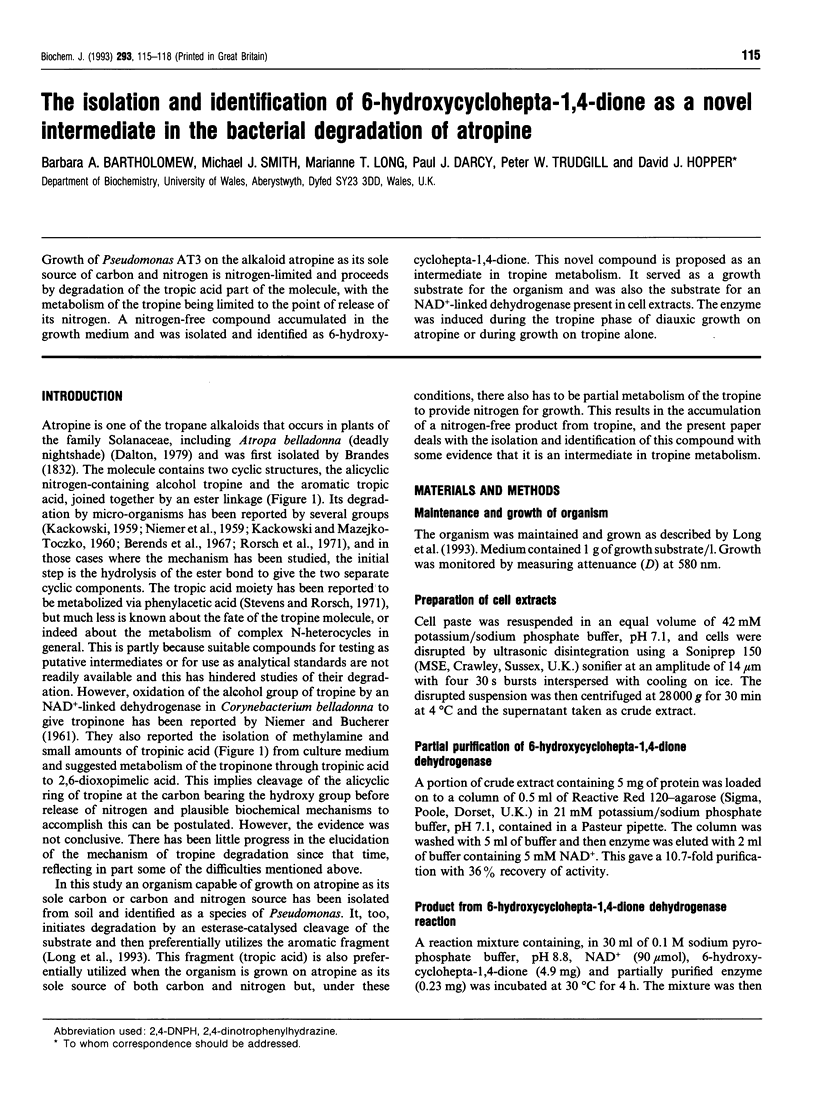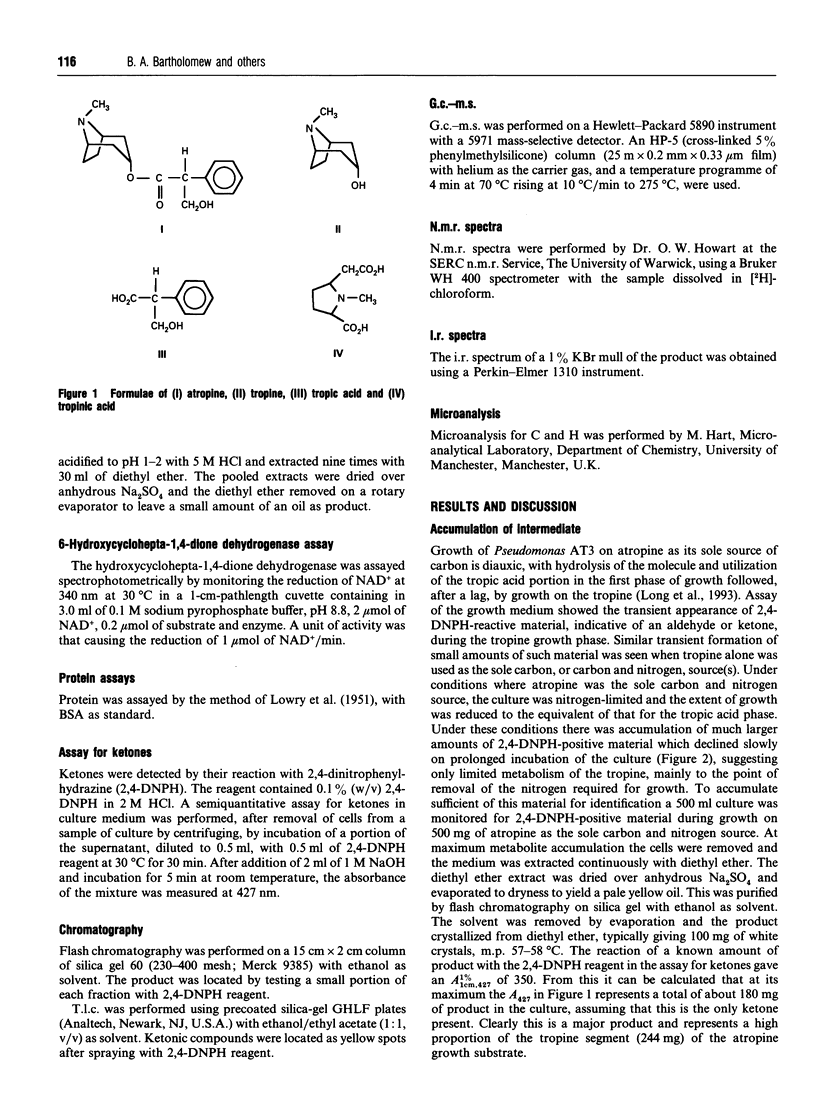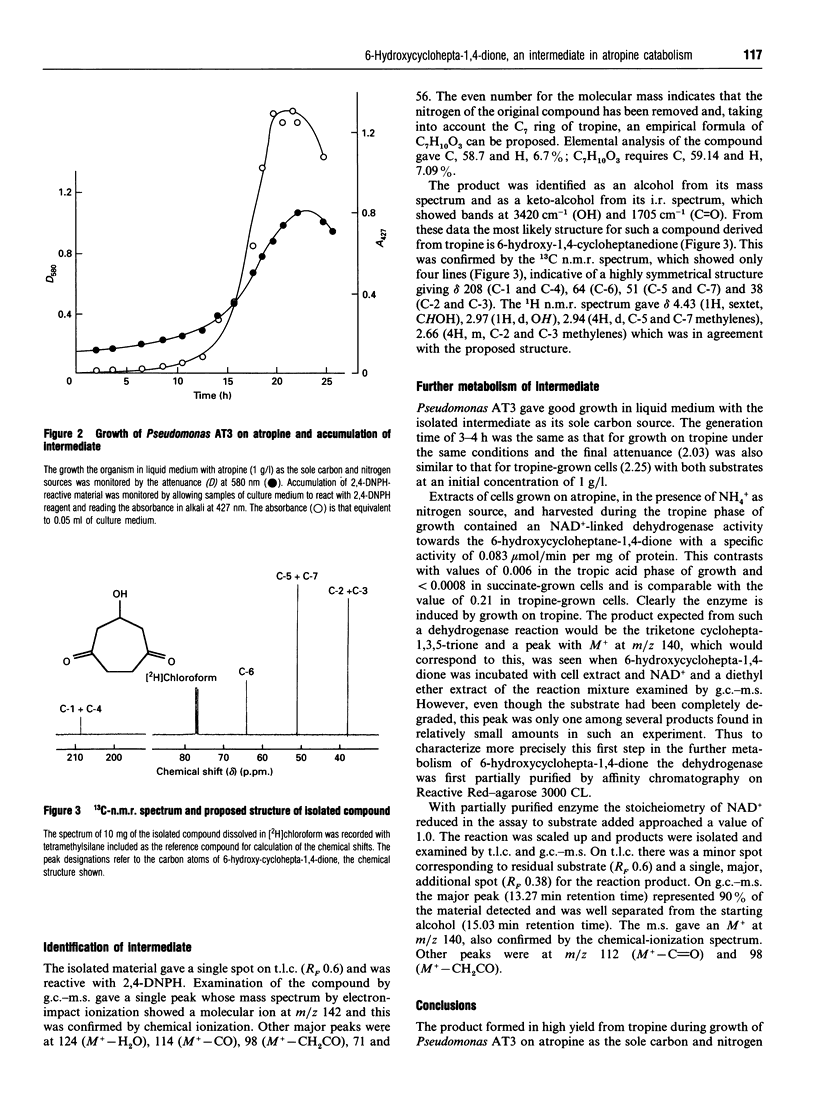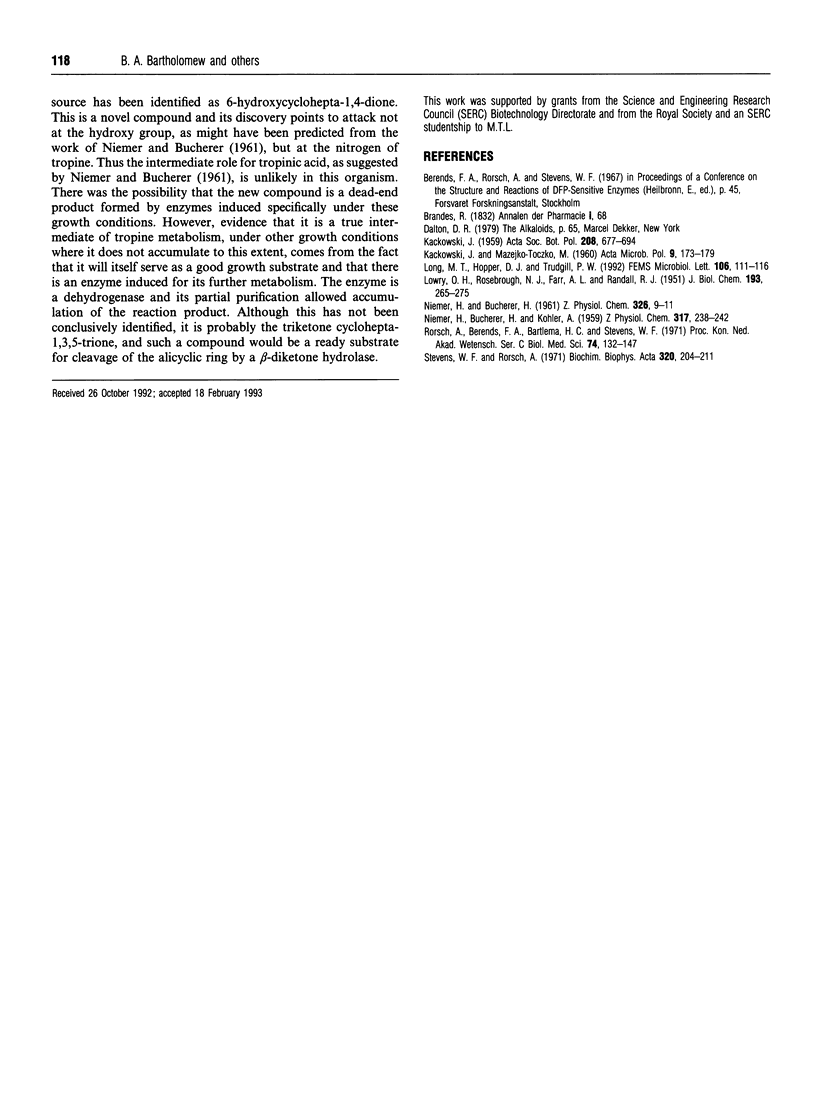Abstract
Growth of Pseudomonas AT3 on the alkaloid atropine as its sole source of carbon and nitrogen is nitrogen-limited and proceeds by degradation of the tropic acid part of the molecule, with the metabolism of the tropine being limited to the point of release of its nitrogen. A nitrogen-free compound accumulated in the growth medium and was isolated and identified as 6-hydroxycyclohepta-1,4-dione. This novel compound is proposed as an intermediate in tropine metabolism. It served as a growth substrate for the organism and was also the substrate for an NAD(+)-linked dehydrogenase present in cell extracts. The enzyme was induced during the tropine phase of diauxic growth on atropine or during growth on tropine alone.
Full text
PDF



Selected References
These references are in PubMed. This may not be the complete list of references from this article.
- KACZKOWSKI J., MOZEJKO-TOCZKO M. [Bacteria decomposing tropane alkaloids]. Acta Microbiol Pol. 1960;9:173–179. [PubMed] [Google Scholar]
- LOWRY O. H., ROSEBROUGH N. J., FARR A. L., RANDALL R. J. Protein measurement with the Folin phenol reagent. J Biol Chem. 1951 Nov;193(1):265–275. [PubMed] [Google Scholar]
- NIEMER H., BUCHERER H., KOHLER A. [On the decomposition of atropine by Corynebacterium belladonnae]. Hoppe Seylers Z Physiol Chem. 1959;317:238–242. doi: 10.1515/bchm2.1959.317.1.238. [DOI] [PubMed] [Google Scholar]
- NIEMER H., BUCHERER H. [On the degradation of atropine by Corynebacterium belladonnae. II]. Hoppe Seylers Z Physiol Chem. 1961 Oct 25;326:9–12. doi: 10.1515/bchm2.1961.326.1.9. [DOI] [PubMed] [Google Scholar]
- Rörsch A., Berends F., Bartlema H. C., Stevens W. F. The isolation and properties of Pseudomonas strains growing on atropine and producing atropinesterase. Proc K Ned Akad Wet C. 1971;74(2):132–147. [PubMed] [Google Scholar]
- Stevens W. F., Rörsch A. The breakdown of tropic acid in Pseudomonas putida strain L. I. Utilization of various substrates; the conversion of tropic acid into phenylacetic acid. Biochim Biophys Acta. 1971 Feb 23;230(2):204–211. doi: 10.1016/0304-4165(71)90205-4. [DOI] [PubMed] [Google Scholar]


